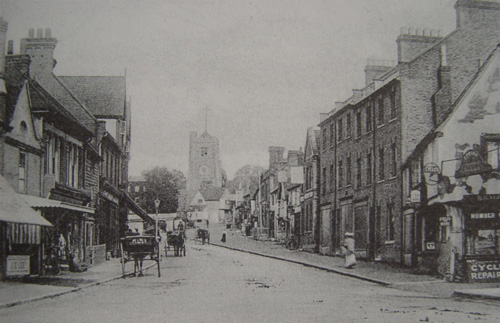Reading documents and simulation exemplar: Victorian trade directories
Exemplar

The Year 5 class was soon to visit a local museum where a Victorian parade of shops is recreated. We decided to use the 1857 trade directory for our town, Crediton in Devon, to bring its main shopping street to life before the visit.
Trade directories, together with census returns and inventories, are three documentary sources easy to obtain from your local record office or local study library. They are packed with information and ideas about societies in the past.
Studying the trade directory
We handed out the 1857 trade directory page for the Crediton High Street, one per pupil. We gave them two minutes for a quick scan of the document. We asked: What does the document show? We pooled pupils' ideas, writing them up on the flipchart.
Most children identified the document as showing shops on Crediton High Street. Next, we asked them to give the document a slow, careful read. Are any shops the same as today? Are there any you don't recognise? Do we know what all the shops sell? The children enjoyed this challenge, excitedly pointing out, for example, that there was still a chemist today on the same corner as in 1857. We explained the meaning of occupations such as glazier.
Recreating the street
We divided up the 1857 shops among the children, with one pair per shop. We told the new shopkeepers that they needed signs to advertise their shops. The children designed their shop signs. Then we used clothes pegs to hang the signs along a piece of twine in the order of the High Street's numbers. The list of shops included:
Baker
Blacksmith
Boot and shoe maker
Butcher
Carpenter
Chemist
Coal merchant
Dress maker
Glazier
Grocer
Hat maker
Ironmonger
Plumber
Sweet shop
Toy shop
Wine shop
Watch maker
Simulation - bringing the street to life
The children prepared for their Victorian trading game. We gave out card, pens, crayons, scissors and glue. Each shop-owner made cardboard goods to sell, using the class topic books to research what Victorian clothes, hats, toys, tools, etc. looked like.
When the goods were ready we lined up the class tables under the shop signs, the children laid their goods on the tables (the shop counters), and opening time was declared. One child in each pair minded the shop, selling to customers, while the other went shopping along the street. Halfway through the children swapped roles.
The lesson was a good example of enactive (kinaesthetic) learning that motivated every child in the class.
The museum visit
What a buzz there was when we visited the local museum! There were the things they had been buying and selling in their recreated Crediton High Street.
By Jon Nichol, edited by Jacqui Dean from Teaching Primary History pages 94 -7, Heinemann, out of print

